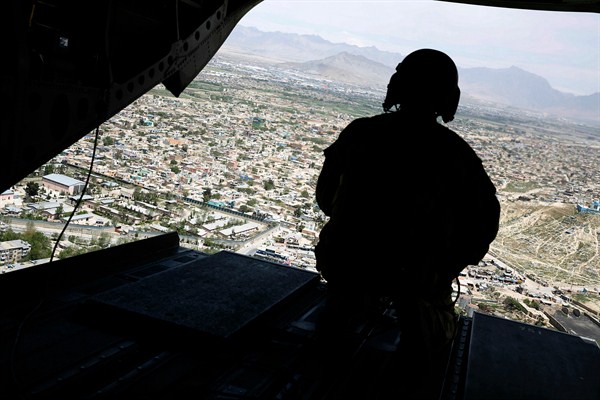Earlier this week, Pentagon officials confirmed that Abdul Hasib Logari, the leader of the self-proclaimed Islamic State’s Afghan affiliate, had been killed in a joint U.S.-Afghan operation in eastern Afghanistan on April 27. That operation, in which two U.S. Army Rangers were also killed, followed an airstrike by U.S. forces in Afghanistan that dropped a GBU-43/B Massive Ordnance Air Blast Bomb, or “MOAB,” on an Islamic State tunnel complex. The bomb is one of the largest conventional weapons in the U.S. arsenal and represented a dramatic escalation of American operations against the Islamic State affiliate, known as the Khorasan Province.
U.S. military officials have described these operations as aimed in part at deterring the Islamic State’s leadership from seeking to relocate to Afghanistan as they come under pressure from coalition operations in Iraq and Syria. White House spokesman Sean Spicer has called the defeat of the Islamic State as a top priority of the Trump administration’s strategy in Afghanistan. But the threat posed by the militant group to the Afghan national unity government led by President Ashraf Ghani and Chief Executive Abdullah Abdullah, and to U.S. interests in the region, is relatively small compared to the ongoing Taliban insurgency—not to mention the fractious political dynamics and weak resource base that plague the Afghan government’s efforts to assert control over the country.
Logari’s death is the latest setback for the Islamic State’s Khorasan Province, which has faced steadily increasing pressure from U.S. and Afghan forces after an initial expansion into several districts in eastern Afghanistan’s rugged Nangarhar province and smaller pockets around the country following the group’s initial formation in January 2015. The group’s original core leadership was centered around a breakaway faction of the Tehreek-e-Taliban Pakistan—the TTP or Pakistani Taliban. While there are some concerns that the Khorasan Province has sought to recruit in Afghanistan’s urban centers, most accounts indicate that opportunistic or disaffected local militant groups switching affiliation from the Afghan Taliban to the Islamic State form the bulk of its forces.

